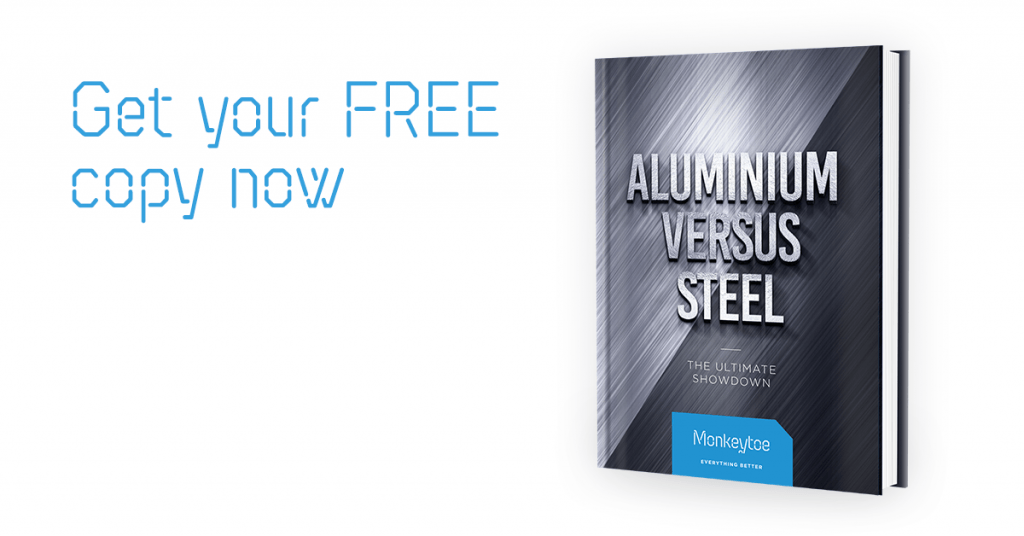As the construction industry takes a more long-term view – looking to build for 25 or 50 years out and considering the total cost of a project, both financially and environmentally – it’s encouraging to see sustainability becoming more of a focus. It’s about efficiency not only in design, but also in choosing locations, in construction itself, in maintenance and renovation, and even in demolition.
In this way, construction is becoming more about development that meets the needs of the present without compromising the ability of future generations to meet their own needs too. Building practices are beginning to work towards the smallest possible environmental footprint as they look to minimise waste, conserve energy, and often, as another positive by-product, save money.
So what does this have to do with aluminium? And how does it stack up against steel when it comes to its use in structural elements?
A smarter choice
For starters, aluminium is non-corrosive and resistant to the elements. The average rate of penetration for corrosion of aluminium is as low as 0.00051MM/year compared to steel which can be as high as 0.0445mm/year. These numbers may seem miniscule, but the impact is significant. Evidence from the shipbuilding industry shows that the aluminium alloys used to construct ocean-going vessels corrode roughly 100 times more slowly than their steel counterparts. We don’t need to tell you what this longevity means for production requirements and overall environmental footprint.
However, there are other benefits too. Aluminium is lighter in weight by almost a third as compared to its steel counterpart. It also has a high strength-to-weight ratio, allowing the opportunity to minimise the dead load on supporting structures without compromising the strength of a building as a whole.
And lastly, it has a greater capacity to absorb crash energy than steel – helping aluminium to become the material of choice for structures designed to resist fire or explosive blasts. When exposed to heat, aluminium is highly reflective and absorbs less radiant energy – meaning it takes longer to heat up. This speaks to its choice as a roofing material in energy efficient homes, as it moderates the internal temperature increases that occur on hot, sunny days.
Specific sustainability factors
While its physical properties are impressive on its own, aluminium has one of the most sustainable production lifecycles of any metal, even before it becomes part of a building. There are several other factors, however, that earn aluminium further ticks in the sustainability boxes.
Recycling
Aluminium is remarkable in the extent to which it can be recycled. In the European Union, more than half of the current aluminium production uses recycled raw materials and this proportion continues to rise.
At present, it is estimated that roughly 75% of all the aluminium ever produced is still in circulation owing to both its long lifespan and strong economic incentives to reuse deconstructed aluminium components.
A big factor driving these high rates of aluminium recycling is the retention of its original properties at the end of the recycling process; it can be reused as pure aluminium or alloyed with a variety of other metals in much the same way as newly extracted aluminium. In Europe, over 70% of used aluminium cans are recycled in a process that sees that same metal used to make new cans in less than 60 days. So, not only does aluminium have a long lifespan, it can be reincarnated ad infinitum.
Another key factor is cost
One of the biggest costs in the primary production of aluminium is the energy required to extract it from ore; smelters require large amounts of electricity to drive the extraction process. By comparison, the recycling of aluminium uses approximately 5% of the energy expended in the extraction stage. This provides an enormous economic incentive to reuse aluminium instead of expanding mining operations.
Neutrality
Aluminium alloys have been shown to be completely neutral in their effect on air, soil, and water quality. They also don’t easily react with most substances, so present no significant chemical hazard to building occupants. In a similar way, aluminium provides an effective barrier against airflow, light, and microorganisms and can be used strategically in structures that have need for these qualities.
While aluminium certainly wins in the sustainability stakes when compared to other construction materials like steel, you can see these two metals go more completely toe to toe in our ebook: ‘Aluminium versus Steel – The Ultimate Showdown’. Download it now for a greater deep dive into their differences.



